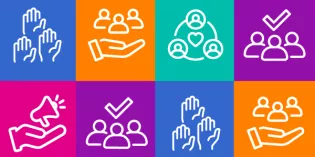
1. The British Paediatric Association gains a charter and becomes the RCPCH (1996)
The BPA was established in 1928 with the aims of advancing the study of paediatrics and to promote friendship amongst paediatricians, and ‘to advance, for the benefit of the public, education in child health and paediatrics and to relieve sickness by promoting improvements in paediatric practice.’
From the 1940s, there were discussions that paediatricians should have their own Royal College and in 1992, a referendum was held where members voted in favour of a College and the application was approved by the Privy Council. We received our charter in August 1996 and were designated Royal two months later in October 1996.
Our first Annual Conference as a College took place in April 1997 at the University of York.

2. RCPCH takes over paediatric examinations (1999)
Throughout the organisation’s history, we have sought to influence and develop paediatric training. Upon receiving our Royal Charter in 1996, the RCPCH took over responsibility for paediatric training from the Royal College of Physicians, which included seftting syllabui for paediatric training, running examinations, liaising with General Medical Council (GMC) for paediatricians to enter the specialist registers and, later, the recruitment of doctors to the specialty training programme and supporting revalidation.
Examinations were jointly run between the RCPCH and RCP from 1996 to 1999, when the RCPCH ran the MRCPCH and Diploma of Child Health examinations. We now run exams in 12 countries.
3. Supporting paediatricians and child health at home and abroad (2002)
The RCPCH has had an international presence from its beginnings as the BPA when the president in 1931 represented the organisation at a Save the Children Union meeting at The Hague. Since then, members have represented the organisation worldwide and led global programmes to improve child health overseas, notably in developing countries.
Closer to home, the RCPCH has always had committees for each of the nations, and now has dedicated teams in Wales, Scotland and Northern Ireland to ensure our work happens across all four UK nations.
4. Our research activities become political (2005)
We began actively striving for improvements in child health and lobbying the government following the outbreak of the Second World War but research activities later became formalised through committees and working groups. Our first evidence-based guideline, ‘Evidence Based Guideline for the Management of CFS/ME (Chronic Fatigue Syndrome/Myalgic Encephalopathy) in Children and Young People’, was launched in parliament on 3 February 2005. It was developed between professionals and patients for the management of CFS/ME in children and young people and aimed to increase knowledge and understanding among paediatricians to give them confidence in making a positive diagnosis and to ensure that young patients with CFS/ME were managed well.
Since then, we’ve continued to publish clinical guidelines, audits and other research and policy resources.

5. Supporting our membership
Our members are at the heart of what we do. When we were founded as the BPA, membership was limited to 60 members, and applications were reviewed at the Annual Meeting, until this was lifted in the 1950s. When the BPA became a Royal College in 1996, it had just over 4,000 members and this has continued to grow over the last 25 years. Junior membership for trainees was introduced in 1997. Our first Fellowship ceremony took place in March 1999 where 26 new Fellows received their certificates.
It’s essential that our members have a voice across in the College and we have over 80 committees and boards for our members to lead on the College’s mission to ‘transform health through knowledge, innovation and expertise’. We are looking forward to continuing to support our members and influence child health over the next 25 years and beyond.










